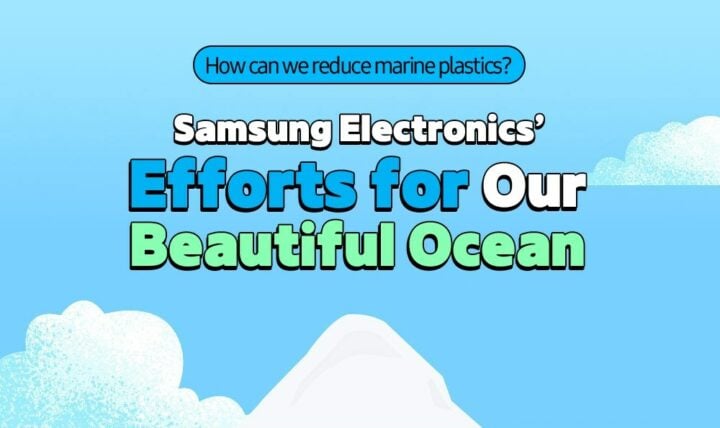
Here’s everything Samsung is doing to protect the oceans

Samsung has been putting in all its efforts to minimize the impact on the environment by using discarded fishing nets for making its products and implementing other AI features. It recently got a Platinum certification from the Alliance for Water Stewardship (AWS) for water resource management. Previously as well, it has been awarded multiple awards and certifications for making efforts toward a sustainable environment.
The Galaxy S23 series also makes use of recycled plastics made from discarded fishing nets in more parts. The Galaxy S23 Ultra has 80% recycled PET, 20% pre-consumer recycled glass, and 20% recycled ocean plastic. All these efforts are in line with Samsung’s mission of discarding 15 tons of discarded fishing nets from the ocean by the end of this year.
Samsung offers various AI features on its products to reduce energy consumption
Samsung started using recycled plastic with the Galaxy S22 series, and it has been forwarded over to devices such as the Galaxy S23, Galaxy Buds, tablets, PCs, and more. The South Korean technology giant has also joined hands with like-minded partners such as Hanwha Compound and DSM to develop eco-conscious materials using the discarded fishing nets in the ocean.
As noted in the official infographic blog, Samsung is using recycled fishing nets to produce 1 metric ton of plastic can reduce carbon emissions by around 25%. Also, manufacturing products using recycled materials is equivalent to planting 120 30-year-old pine trees. Samsung has incorporated SmartThings and other AI features on its TVs, monitors, and home appliances to reduce energy consumption.
Its Bespoke range of washers comes with upgraded energy efficiency and AI features to reduce microplastics. Samsung Electronics also offers a SolarCell remote control, which is made from 24% recycled plastic, and charges using daylight and interior light.




